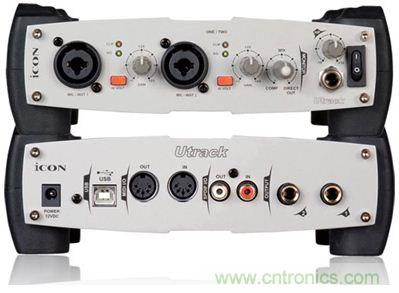For now, the differences in various environments, especially the impact of peripheral electromagnetic interference, will affect various signal switching systems to a certain extent, therefore, each manufacturer in their own signal switching systems, have adopted EMI/EMC suppression and other technologies.
In the modern system integrated control, large signal switching system is essential to all kinds of places, the current mainstream signal switching system includes CREATOR and other large switching system products, including AV signal switching system, RGB signal switching system, DVI signal switching system and HDMI signal switching system. However, for now, the differences in various environments, especially the impact of peripheral electromagnetic interference, will affect various signal switching systems to a certain extent, therefore, each manufacturer in their own signal switching systems, have adopted EMI/EMC suppression and other technologies. Below, I would like to briefly introduce some related issues:
EMI/EMC testing requirements are different depending on the type of product and the testing organization. However, EMI/EMC testing can be broadly divided into two categories:
Radiation: This test defines the amplitude and frequency of the signal emitted or transmitted by a product so that it does not interfere with other products.
Sensitivity (also known as immunity) : This test indicates the radiation suppression capability of the product by defining the amplitude and frequency of radiation and conducted signals that can interfere with the proper operation of the device.

The video format commonly used by computers, which we call "graphics," is not the same as the video form of television. Computer video includes red, green, and blue (R, G, B) analog video signals, as well as logic signals composed of line, field synchronization, and DDC5, all of which have fast rise/fall times. Video connectors usually use high-density ultra-micro D-type connectors to connect monitors and computers. Although this solution combines measures such as video signal shielding (coaxial) and common mode choke (CMC) to reduce radiated and conducted EMI, additional filtering is needed to ensure that EMI requirements are met. In broadcast video applications, similar filtering measures are used to eliminate aliasing defects in television images. This cannot be done in graphic video, however, because the goal of graphic video is to reproduce the checkerboard pattern of "on" and "off" pixels at the highest possible resolution. Therefore, for the best display performance, we want as much bandwidth as possible. However, in practical applications, EMI and video performance must be weighed, so video bandwidth must be sacrificed. For multi-signal video interfaces, many factors need to be weighed.
For audio interfaces to achieve efficiency and performance without producing EMI, there are a number of different problems to solve. In portable applications, we want to maximize battery life without expecting heat from inefficient designs, so Class D amplifiers are widely used. The problem is that Class D amplifiers use PWM to achieve high efficiency, much like switching power supplies. When connected to the output using an unshielded speaker cable, the cable radiates EMI like an antenna. Although the clock frequency (typical values 300kHz to 1MHz) is higher than the audio spectrum, it is a square wave with a large harmonic component. The filter used to filter out the harmonic component is large in size and high in cost. In portable applications such as laptops, this is not a viable solution due to size.
Among the many EMI/EMC suppression technologies, the MAX9511 and MAX9705 represent advanced EMI/EMC control technologies, so they are gradually applied to specific products. The use of these devices in products can effectively reduce EMI. Instead of relying on methods such as large-size external filters and shielding to increase costs and sizes, these devices use today's most advanced technology to effectively guarantee electromagnetic compatibility and performance.
免责声明: 本文章转自其它平台,并不代表本站观点及立场。若有侵权或异议,请联系我们删除。谢谢! Disclaimer: This article is reproduced from other platforms and does not represent the views or positions of this website. If there is any infringement or objection, please contact us to delete it. thank you! |


